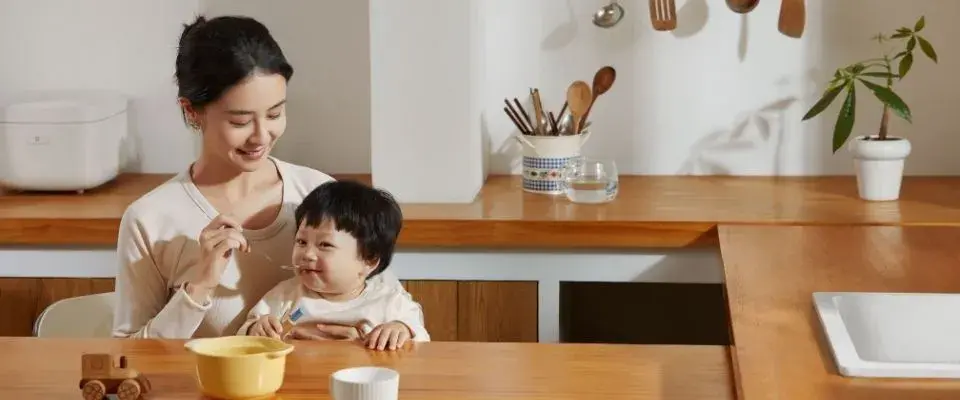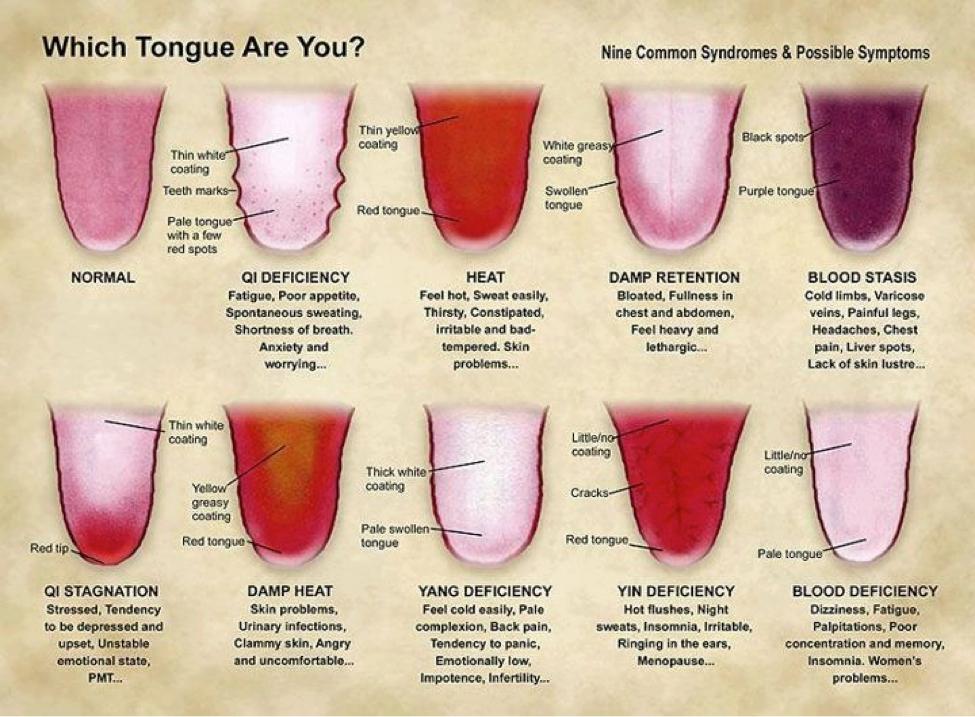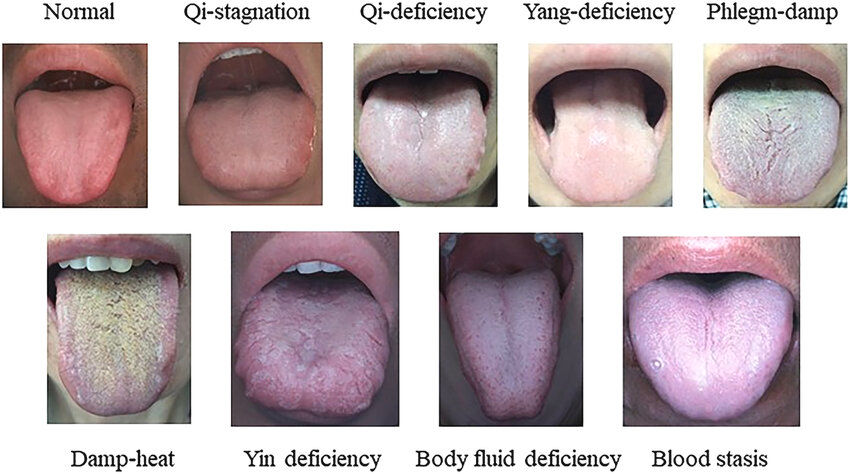
Observation of Tongue (舌)
One of the most important diagnostic tools in TCM, the tongue reflects the state of the Zang-Fu, Qi-Blood, and pathogenic factors.
Body Colour
Heat (red), Cold (pale), Blood stasis (purple)
Body Shape
Swollen (Damp), Thin (deficiency), Cracked (Yin Deficiency)
Coating
Reflects Stomach and Damp/Phlegm
-
White = Cold
-
Yellow = Heat
-
Thick = Excess
-
Thin = Deficiency
Moisture
Yin deficiency or Heat; Wet = Damp or Cold
Different regions of the tongue correspond to different Zang-Fu organs
-
Tip = Heart/Lung
-
Centre = Spleen/Stomach
-
Sides = Liver/Gallbladder
-
Root = Kidney
Thin body
Yin or Blood deficiency
Obese body
Dampness, Phlegm, Spleen Qi deficiency
Upright posture
strong Zheng Qi

Observation of Body Shape and Posture
Thin body
Yin or Blood deficiency
Obese body
Dampness, Phlegm, Spleen Qi deficiency
Upright posture
strong Zheng Qi
Slouched or stiff posture
Qi/Blood stagnation, Wind, Pain

Observation
The process of "Looking" (望诊 wàng zhěn) is one of the Four Diagnostic Methods (四诊 sì zhěn), and it plays a critical role in gathering visual diagnostic information. The practitioner uses observation to assess the patient's Qi, Blood, fluids, organ function, and pathogenic influences by examining various external signs that reflect internal states. This process involves detailed inspection of the patient's complexion, demeanour, body shape, posture, tongue, secretions, and specific parts of the body. It is a non-invasive but highly informative method to identify both the nature and depth of disease.
Goals of Looking in TCM Diagnosis
-
Assess the vitality and balance of Yin-Yang
-
Detect signs of Heat, Cold, Excess, Deficiency
-
Identify organ dysfunction and meridian imbalances
-
Observe manifestations of emotions and pathogenic factors
Looking is a diagnostic art that reveals the state of Zang-Fu organs, vital substances, and pathogenic influences through visual signs on the body. By observing the Shen, complexion, tongue, posture, skin, eyes, secretions, and other visual cues, practitioners gather essential information about the internal condition of the patient without invasive testing. It is used in combination with listening/smelling, asking, and palpation to achieve an accurate pattern differentiation (辨证).

Looking
Observation of Shen (Spirit/Vitality 神)
Shen refers to the overall expression of life: clarity of the eyes, facial expression, movement, speech, and responsiveness.
Shen reflects the Heart, Kidneys, and overall vitality (Zheng Qi).
Healthy Shen
Bright eyes, clear mind, responsive, good posture
Disturbed Shen
Dull eyes, confusion, restlessness, depression
Shen Collapse
Delirium, coma, inability to focus, very weak pulse


Observation of Complexion (面色)
The face reflects organ health, Blood flow, and Qi status.
Pale
Metal (LU), Earth (SP)
Blood or Qi deficiency, Cold
Red
Fire (HT)
Heat (Excess or Deficiency Heat)
Yellow
Earth (SP)
Dampness (dull yellow), SP Deficiency (pale)
Blue green
Wood (LR)
Pain, Cold, Wind, Liver imbalance
Dark grey/Black
Water (KI)
Cold, Kidney Xu, Blood stasis
Observation of Eyes (目)
Eyes reflect the state of the Shen and Liver.
Bright, clear eyes
Good Shen and Liver Blood
Dull, lifeless eyes
Shen disturbance, Blood or Yin deficiency
Red, swollen eyes
Liver Fire, Wind-Heat
Dry eyes
Liver Yin Deficiency
Jaundice in sclera
Damp-Heat or Damp-Cold in the Liver/GB

Observation of Skin and Limbs
Dry skin
Blood or Yin deficiency, Dryness pathogen
Edema
Fluid retention (Yang Xu or Dampness)
Tremors
Internal Wind, Liver Wind, Qi/Blood/Yin Deficiency
Numbness
Blood deficiency, Wind or Damp blocking channels


Observation of Secretions and Discharges
Sputum
Colour and thickness indicate Cold, Heat, Damp, or Phlegm
Sweat
Spontaneous (Qi deficiency), Night sweats (Yin deficiency)
Urine
Colour, frequency (e.g., dark = Heat; clear = Cold)
Stools
Consistency, colour, presence of mucus or blood
Observation of Children (Paediatric Diagnosis)
Special attention to:
-
Facial vein (index finger venule): superficial vein visibility relates to Wind, Cold, Heat
-
Crying: tone, timing may indicate hunger, pain, or fear
-
Fontanelle: sunken (deficiency), bulging (excess)




